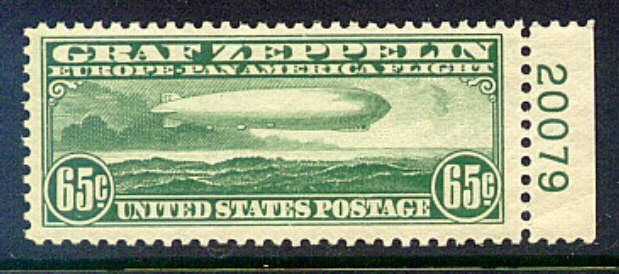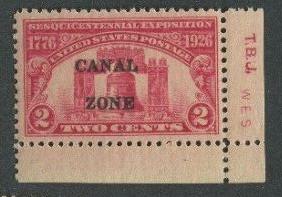| The American Plate Number Single Society | ||
|
HOME
MEMBERSHIP
PUBLICATIONS
LINKS
|
 Initials on Flat Plate printings There are several types of initials that were printed in the margins of flat plate stamps in the early 1900s.
Siderographers Siderographers, the BEP employees who actually engraved the stamps, engraved their initials in the lower left corner of the plate. They are printed in the left margin of position 91 of the lower left pane of 100 stamps, or in position 46 of the lower left pane of 50 stamps. Some siderographers engraved their initials in the bottom margin of the same positions. They thus are possible in one out of 400 or one out of 200 stamp positions. There is one rare exception where the siderographer's initials were engraved in an upper left position. Bicolor stamps often have two sets of initials, as separate plates were used to print each color. Occasionally, the second set of initials appears in the margin of the stamp above or to the right of the corner stamp.
Siderographers' or engravers' initials are often referred to as "designers' initials." This is an inaccurate term, as the actual stamp designers are not credited in this manner.
Plate finishers Plate finishers were responsible for general cleanup of the engraving, before a proof sheet was created and examined. If acceptable, the plate was then checked into the vault for a scheduled print run, or could immediately be sent for printing. Plate finishers engraved their initials in the lower right corner of the plate. They are printed in the right margin of position 100 of the lower right pane of 100 stamps, or in position 50 of the lower right pane of 50 stamps. Again, some plate finishers added their initisl in the bottom margin of the same positions.
Plate finishers' initials are sometimes referred to as engravers' or designers' initials. These are inaccurate uses of the term. A very few plate finishers were later promoted to siderographers. As a result, their initials might appear in the lower right margin for some issues and in the lower left margin for later issues that they worked on.
Pressmen Printing plates were secured in a vault and were accountable and trackable for all usages. Pressmen who were authorized to check out a plate for a print runs punched their initials into the margin before their print run, then punched their initials again when checking the plate back in. This made it possible to tell who had printed a given sheet of stamps (the last set of initials printed on the sheet), or who had last checked the plate in (the last pair of initials punched on the plate). Because they were punched, the letters often appear backwards or reversed when printed -- although some pressmen had reversed punches so that the letters would be printed normally. The initials were generally punched starting in the margin of the left plate number of the upper left pane on the plate, but often started with the lower left pane or as low as the lower left corner stamp. Some plates were checked out for printing and checked back in for multiple press runs, so the string of punched initials could extend up the left margin, then well across the top of the upper margin of the upper left pane. Pressmen's initials or printers' initials are sometimes referred to as engravers' initials. This is an inaccurate usage of the term. The initials were punched, not engraved. Pressmen were not part of the plate creation process, and engravers never physically printed any stamps. There was never any overlap in the job duties.
Siderographers' initials and plate finishers' initials are considered highly collectible and often sell at a premium over plate number singles. When printers' initials appear on the stamp with plate number, their presence can help determine that it is the left plate number from the upper left pane, as opposed to the left plate number from the lower left pane. However, in general, printers' initials are generally considered a curiosity. APNSS member, the late Doug D'Avino, was a specialist in siderographers' initials and plate finishers' initials. His biography of each "man behind the initials" was serialized in U.S. Specialist, the monthly bulletin of the United States Stamp Society, and is highly recommended.
The extreme pressures caused by flat plate printing, as well as the acidic and abrasive qualities of some inks, wore down plates or caused cracks and other deformities. Plates could also be damaged during movement to and from the vault, or while mounting or unmounting a plate during printing. Sometimes an individual position could be re-entered with a fresh engraving from the master die, and printing using that plate could continue. Other times, plates had to be retired and new plates were created to take their place.
Initials on Offset printings BEP employees continued to be involved in plate creation, even with the offset printings. A few siderographers added their initials in the margins of a handful of the offset plates. For examples, see the Offset printings.
Comments? Suggestions? Email the Webmaster: This page last updated June 11, 2023.
Opinions expressed by authors are their own and do not necessarily reflect those of the APNSS, its officers or members. |

.jpg)












